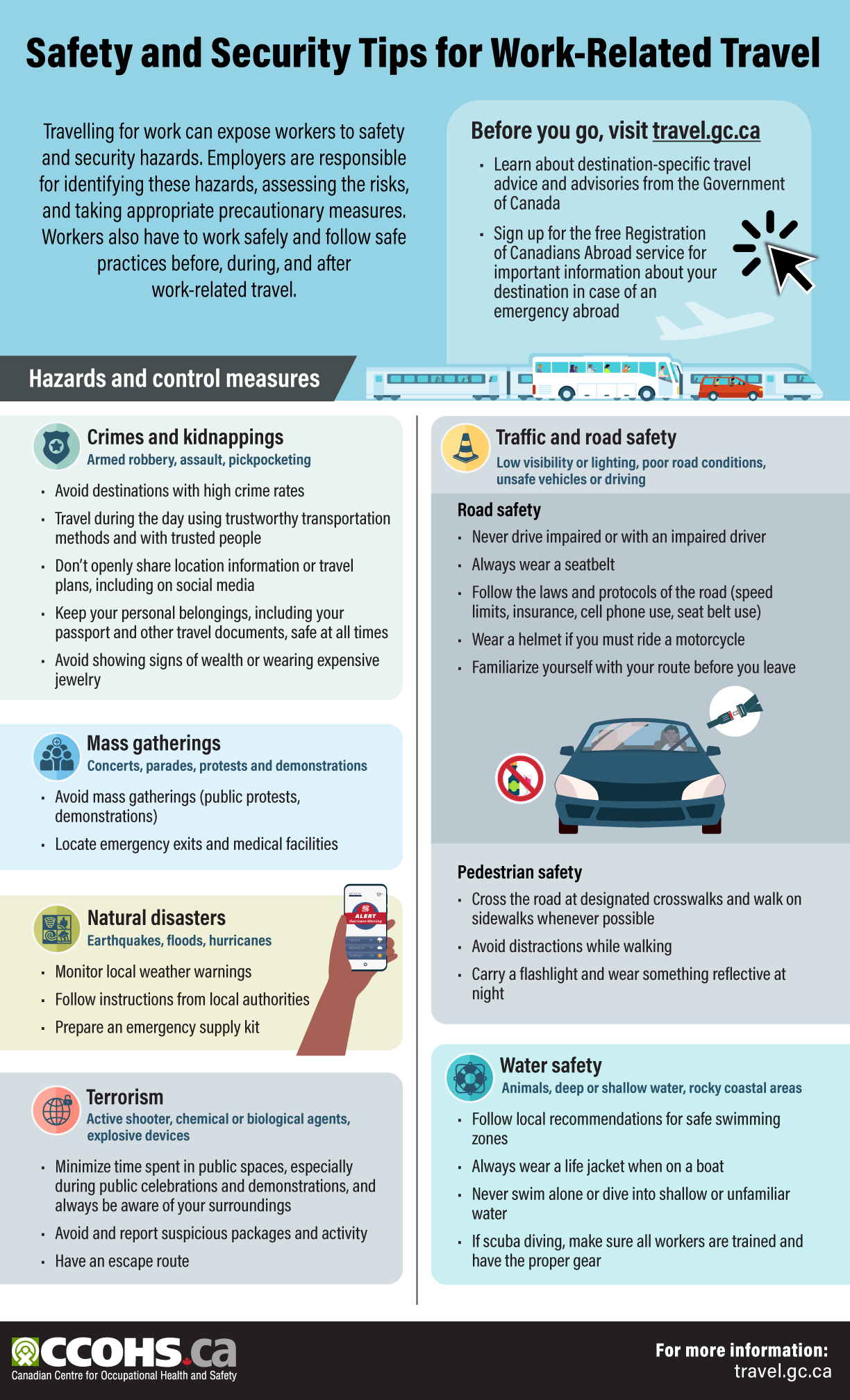Description

Description: Safety and Security Tips for Work-Related Travel
Travelling for work can expose workers to safety and security hazards. Employers are responsible for identifying these hazards, assessing the risks, and taking appropriate precautionary measures. Workers also have to work safely and follow safe practices before, during, and after work-related travel.
Before you go, visit travel.gc.ca
- Learn about destination-specific travel advice and advisories from the Government of Canada
- Sign up for the free Registration of Canadians Abroad service for important information about your destination in case of an emergency abroad
Hazards and control measures
Crimes and kidnappings
Armed robbery, assault, pickpocketing
- Avoid destinations with high crime rates
- Travel during the day using trustworthy transportation methods and with trusted people
- Don’t openly share location information or travel plans, including on social media
- Keep your personal belongings, including your passport and other travel documents, safe at all times
- Avoid showing signs of wealth or wearing expensive jewelry
Mass gatherings
Concerts, parades, protests and demonstrations
- Avoid mass gatherings (public protests, demonstrations)
- Locate emergency exits and medical facilities
Natural disasters
Earthquakes, floods, hurricanes
- Monitor local weather warnings
- Follow instructions from local authorities
- Prepare an emergency supply kit
Terrorism
Active shooter, chemical or biological agents, explosive devices
- Minimize time spent in public spaces, especially during public celebrations and demonstrations, and always be aware of your surroundings
- Avoid and report suspicious packages and activity
- Have an escape route
Traffic and road safety
Low visibility or lighting, poor road conditions, unsafe vehicles or driving
Road safety
- Never drive impaired or with an impaired driver
- Always wear a seatbelt
- Follow the laws and protocols of the road (speed limits, insurance, cell phone use, seat belt use)
- Wear a helmet if you must ride a motorcycle
- Familiarize yourself with your route before you leave
Pedestrian safety
- Cross the road at designated crosswalks and walk on sidewalks whenever possible
- Avoid distractions while walking
- Carry a flashlight and wear something reflective at night
Water safety
Animals, deep or shallow water, rocky coastal areas
- Follow local recommendations for safe swimming zones
- Always wear a life jacket when on a boat
- Never swim alone or dive into shallow or unfamiliar water
- If scuba diving, make sure all workers are trained and have the proper gear
For more information: travel.gc.ca
Document last updated on: 2024-03-07

